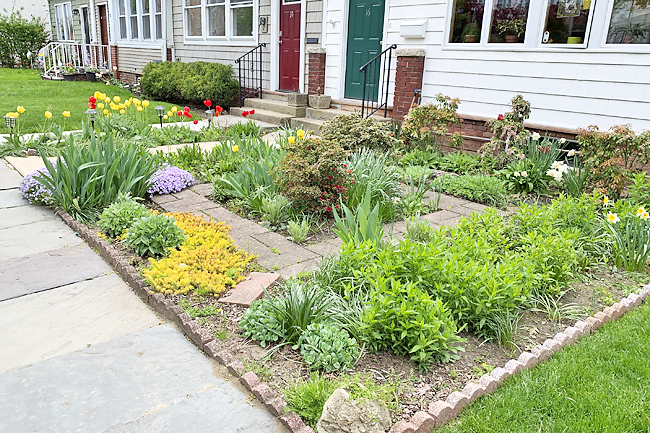WHITE PLAINS, NEW YORK (AP) – LeighAnn Ferrara is transforming her small suburban yard from grass bordered by a few shrubs into an anti-lawn – a patchwork of flower beds, vegetables and fruit trees.
It didn’t happen all at once, said the mother of two young kids. “We started smothering small sections of the lawn each year with cardboard and mulch and planting them, and by now the front yard is probably three-quarters planting beds,” she said. “Every year we do more.”
Her perennials and native plants require less upkeep and water than turf grass does. And she doesn’t need herbicides or pesticides – she’s not aiming for emerald perfection.
For generations, the lawn – that neat, green, weed-less carpet of grass – has dominated American yards. It still does.
But a surge of gardeners, landscapers and homeowners worried about the environment now see it as an anachronism, even a threat.
Like Ferrara, they’re chipping away at it.
“America is unique in its fixation on the monoculture lawn,” said vice president of education at the EO Wilson Biodiversity Foundation in Durham, North Carolina Dennis Liu. “Our English inheritance is our own little tidy green space.”
Now, drought, crashing insect populations and other environmental problems are highlighting – in different ways, in different places – the need for more kinds of plants in spaces large and small.


Some are experimenting with more “eco-friendly” lawns, seed mixes you can buy with native grasses that aren’t as thirsty or finicky. Others are mowing less and tolerating old foes like dandelions and clover.
Still others are trying to replace lawns, entirely or bit by bit, with garden beds including pollinator-friendly and edible plants.
It all leads to a more relaxed, wilder-looking yard.
In states with water shortages, many homeowners swapped out turf grass for less-thirsty options, including succulents and gravel.
Elsewhere, the pandemic has speeded the trend away from lawns. Gardening exploded as a hobby, and many non-gardeners spent more time at home, paying more attention to the natural world around them.
“For people interested in gardening, a lot have come to the realisation it can’t just be ornamental anymore. It has to serve some other purpose, whether food, habitat… pack in as many uses as you can,” said University of Georgia Extension agent in Barrow County Alicia Holloway. “It’s a shift in thought, in aesthetics.”
Monrovia, a major grower of plants for nurseries and other outlets, has seen lots of interest in a “Garden of Abundance” trend – a more “alive-looking” yard with a variety of plants, said company trend watcher Katie Tamony.
She said it’s a way of thinking about your yard “as part of a more beautiful, larger world that we’re trying to create”.
Plants that attract pollinators were the category most sought-after in a survey of Monrovia’s customers, she said.
And yet, the lawn isn’t disappearing anytime soon.
Many homeowners associations still have rules about keeping yards manicured. And lawn services tend to be geared toward maintaining grassy expanses.
Vice president of government relations for the National Association of Landscape Professionals trade group Andrew Bray said lawns are still the mainstream choice. People want neat outdoor spaces for relaxing, playing and entertaining.
He said his group supports the goal of making lawn care more environmentally friendly, but believes some recent ordinances, like those against gas-powered blowers and mowers, have created a “fraught political environment”.
The landscapers’ trade group set up a new public platform this year, Voices for Healthy Green Spaces, to present its side of things. “Whether people want to have a large yard, plant a forest of trees in their backyard, or want a meadow and unstructured plantings,” all are green options, he said.
Those concerned that grass lawns fall short in helping pollinators and other species face another problem. “A lot of people don’t want bees – there’s fear of nature,” said Holloway.
“I think that’s changing, but it still has a long way to go.”






